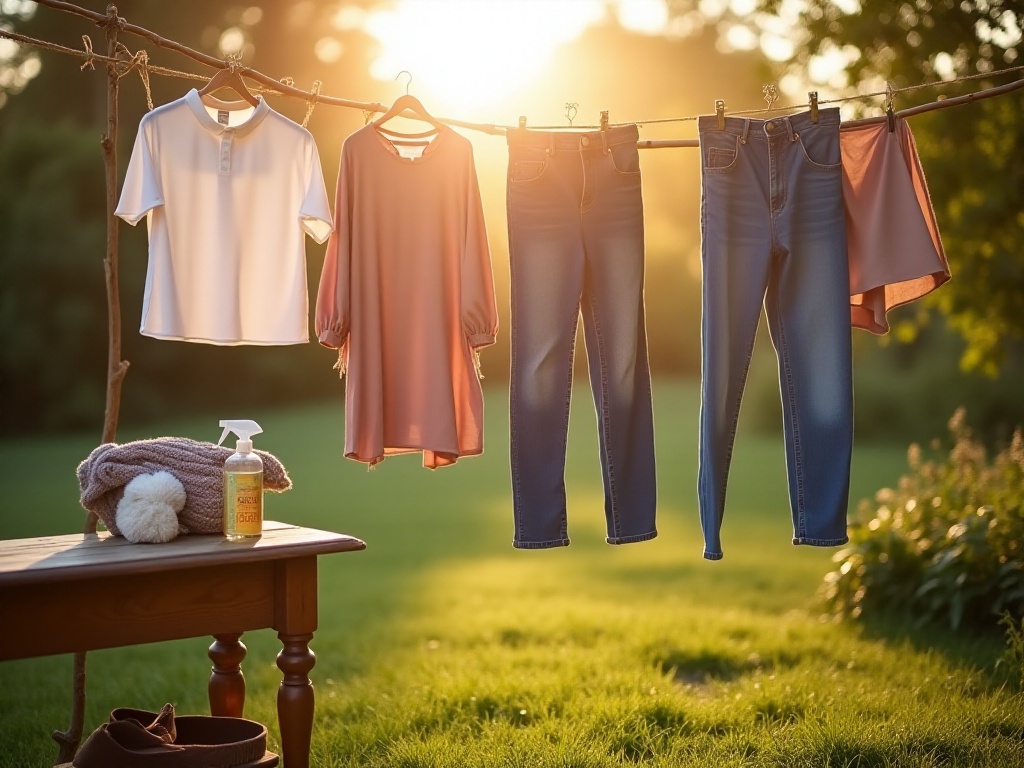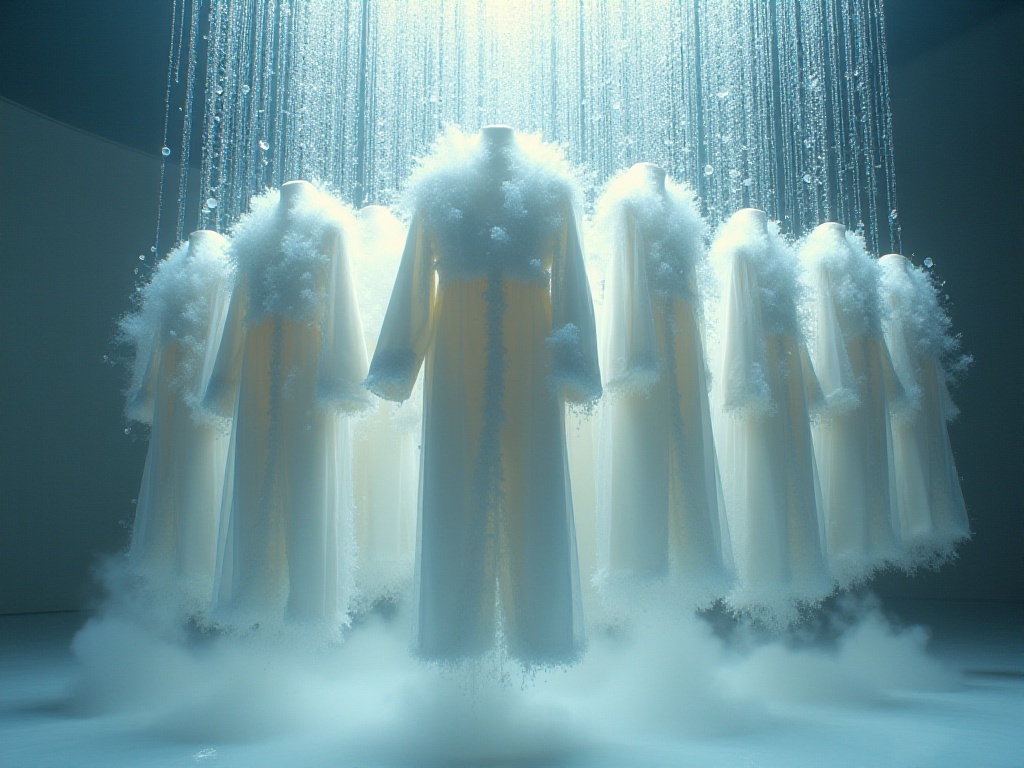Opening Words
Do you often find your clothes looking old and ugly after wearing them just a few times? Or notice that the colors fade and fabrics lose shape after each wash? I totally understand this! As a young professional just starting work, buying clothes has already drained my wallet. It would be heartbreaking if the clothes quickly become unwearable due to poor maintenance. Today, I want to share some super practical clothing care tips with you. These are hard-learned lessons from my years of experience, guaranteed to help your clothes last longer and look better - the money saved could buy you several cups of bubble tea!
Washing Revolution
Many people face this problem: newly bought clothes fade, deform, or pill after just a few wears. The issue often lies in the washing method. I made quite a few mistakes before, so let me tell you how to wash clothes scientifically. I spent almost my entire first paycheck on clothes, but they were all ruined within a season due to improper care - thinking about it now makes me feel so foolish.
First, let's talk about washing frequency. Many people think clothes must be washed after each wear, but this is a misconception. From my experience, outerwear like sweaters and jeans can be worn multiple times before washing if there are no obvious stains or odors. This is especially true for high-quality wool sweaters, where excessive washing actually accelerates wear. I have a pair of quality jeans that has maintained its shape since college, and the secret is minimal washing. Unless stained or smelly, I only wash them after five or six wears. This not only keeps the jeans crisp but also allows that natural worn-in look to develop gradually.
Water temperature choice is also crucial. I've found that cold water helps maintain clothes' color and shape. Except for items like bedsheets and towels that need high-temperature disinfection, most clothes are suitable for cold water washing. My favorite method is to soak clothes in cold water and gently scrub with mild detergent. I remember when I first started working, I had a red dress I really loved, but I used hot water for the first wash. Not only did it fade severely, but it also shrunk so much I couldn't wear it. I've learned my lesson since then.
Speaking of detergent, selection is important. More expensive laundry detergent isn't necessarily better; the key is choosing based on fabric type. Delicate materials like silk and wool need special neutral detergents. I once bought a huge bottle of "super strong" laundry detergent on Taobao, it was super cheap, but after two washes, I noticed the clothes' colors were off. I later learned it was because the detergent was too alkaline.
For valuable clothes, like formal wear or branded items, it's recommended to test wash an inconspicuous area first. I recently received an imported wool cardigan with a "Dry Clean Only" tag, but I thought dry cleaning was too expensive and wanted to try hand washing. Fortunately, I tested a small area on the inside of the sleeve first and found it immediately discolored, so I stopped - otherwise, I would have been heartbroken for quite a while.
Using the washing machine also requires know-how. Different fabrics should be washed separately to avoid color bleeding or damage from friction. Dark clothes should be washed separately the first time as they might bleed. A friend of mine learned this the hard way when she washed a new black hoodie with white underwear - all her white underwear turned gray, quite a painful lesson, right?
Here's a detail many people overlook: always check the care label before washing. Those small symbols aren't just decoration; they each have specific meanings. For example, a crossed-out washtub means no water washing, a crossed-out iron means no ironing. When I first started working, I had a chiffon blouse and didn't understand these symbols. I tried ironing it and burned a hole right through - it still hurts to think about it.
For sweaters that tend to pill, it's best to wash them inside out. This not only reduces pilling but also protects the front from fading due to friction. I have a favorite wool sweater that still looks new after two years because I always wash it inside out.
Here's another practical tip: if you get lipstick or oil stains on clothes, don't wash with water immediately. First use a professional stain remover or cooking oil to treat it, then wash with clean water after the stain softens - this works much better. I remember once getting hot pot soup on my new white T-shirt. I panicked and ran to the bathroom to rinse it, but it only made it worse. Later I learned that I should have first blotted the excess oil with napkins, then used a degreasing detergent - this way it wouldn't leave an ugly mark.

Drying Tips
When it comes to drying, it's quite a science. I've seen too many people get it wrong, resulting in deformed clothes, fading colors, or unsightly drying marks. When I first started working, I used to dry clothes in direct sunlight on the balcony, and within a month, several dark-colored pieces had faded - thinking about it now, it was such a waste.
The most important thing is choosing the right drying method. Heavy sweaters should be dried flat to avoid shoulder deformation from hangers. I've dedicated an area on my balcony, covered with towels, specifically for laying out valuable clothes to dry. Expensive cashmere sweaters, in particular, can get misshapen shoulders if hung on hangers, making them look unflattering when worn.
For shirts, it's recommended to use wider wooden hangers to maintain shoulder shape. Remember to button them up to prevent wrinkles when drying. I used to be lazy and use thin wire hangers for shirts, which left obvious bumps at the shoulders, making them look very unattractive. Now I use non-slip wooden hangers - they're more expensive but keep clothes in better shape.
The drying location is also crucial. Direct sunlight accelerates color fading, so choose a well-ventilated but shaded area. I have sun shades on my balcony specifically for drying dark or delicate clothes. If the weather is bad, you can dry clothes indoors with air conditioning or a dehumidifier running, just ensure good ventilation to prevent mold.
There's also a technique to the drying order. It's best to hang small items like underwear first as they dry quickly, then T-shirts and shirts, and finally heavy items like jeans and sweaters. This maximizes drying space and makes it easier to collect clothes based on their drying progress.
For easily wrinkled items like linen dresses or shirts, it's best to iron them when they're still slightly damp. The remaining moisture makes ironing easier and more effective. I used to wait until clothes were completely dry before ironing, which was not only more difficult but also more likely to leave marks.
Here's another useful tip: when drying dark clothes, turn them inside out to reduce fading from direct sunlight. This is especially important for jeans, which can fade quickly if dried right-side out. I have a favorite pair of black jeans that have maintained their deep black color after more than a year because I always dry them inside out.
[Due to length limits, this content is divided into two parts. This is part one, please let me know if you need the second part.]
Related articles




